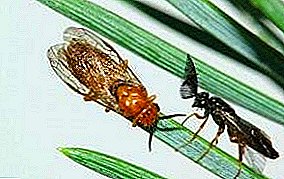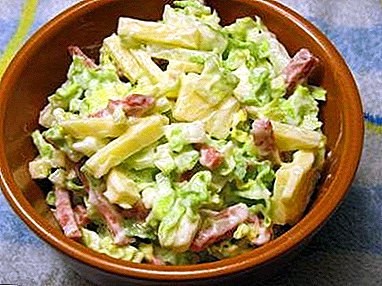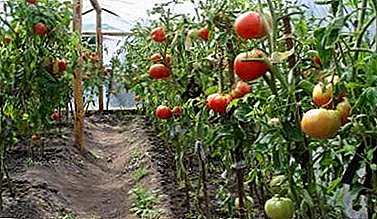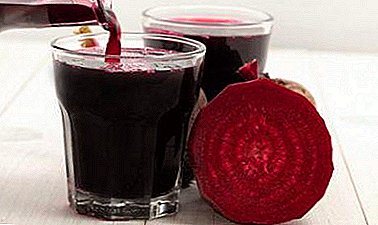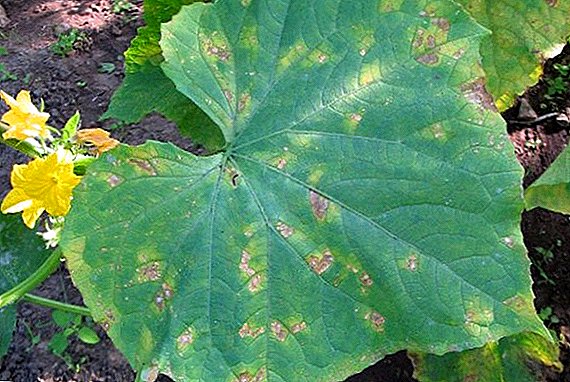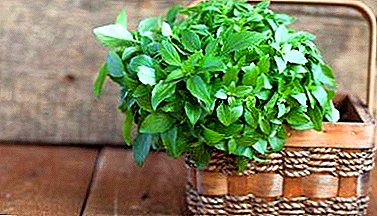
Basil is a rather thermophilic plant, therefore during the cold season it is necessary to ensure comfortable temperature conditions for it. This can be done by growing or planting basil on the balcony or on the windowsill, where it will not be afraid of frost.
In the article we will tell you which varieties are most suitable for cultivation on the balcony; you will find detailed step-by-step instructions for growing this crop, as well as tips for the care and storage of the crop.
Best Grades
The most optimal types of basil for growing on the balcony are stunted plant varieties. This is primarily due to the fact that the culture is growing in a pot, and not in the open field, which means that the amount of land for the development of the root system will be less. Also, some species of this plant can reach a meter in height and have a thick crown, which is clearly not the best option for the room.
The most suitable for the balcony varieties of basil include:
- Marquis.
- Dwarf.
- Citric.
- Yerevan
- Clove.
Step-by-step instructions: how to grow at home?
The key points for growing basil on the balcony are choosing the right pot, soil and place.
Pot
 For pot growing, plastic or ceramic pots or special drawers are great.
For pot growing, plastic or ceramic pots or special drawers are great.
Size is determined depending on the number of seedlingsthat will grow in the tank. The distance between them should be about 6 cm. And the volume of soil needed for one bush is about 1.5-2 liters.
At the bottom of the pot necessarily lay out the drainage to ensure the outflow of excess moisture, it can be rubble, gravel or expanded clay. The layer of necessary drainage is 2-3 cm.
Priming
Land under the basil is chosen fertile, well-drained. Garden soil is excellent for these purposes, the only thing you can add to it is a small amount of mineral fertilizers. Selected soil should be cleaned of stones, dirt, insects and roots, it is also desirable to ignite it in the oven in order to destroy all bacteria and spores.
If it is not possible to collect land from the garden, you can buy ready-made soil in a specialty store ("For vegetable crops and herbs"), and the mixture of humus or compost, peat and washed sand (2: 4: 1) will also be the optimal soil composition.
A place
The most suitable place for growing basil on the balcony will be the sunny side: south or southeast. Thus, the plant will receive the maximum amount of sunlight during the light period of the day. It is also important to protect the bushes from drafts and wind. Another condition for the active growth of basil is the room temperature. It should not be below 21 degrees.
Landing methods
With regard to planting basil, there are several possible ways.
Sowing seeds
One of the most common methods of landing at home. Spring is the best time to plant basil seeds.: March or April.
- First you need to soak the selected seeds in water or solution-stimulator for 7-10 hours.
- Next, the seeds are slightly dried on the fabric, and then planted in a pre-prepared moist soil to a depth of about 1 cm, with a distance of 6-8 cm from each other.
- Then the crops are watered with separated water at room temperature and covered with a film.
- The first shoots can appear already on the 7th day. After their appearance, the film is removed.
Cuttings
Cutting is perhaps the easiest and hassle-free way to grow basil. To do this, in an adult healthy plant, select the appropriate twigs. The best young shoots, 7-10 cm long, are best, they should be cut off and put into water or growth stimulating solution for 1.5-2 weeks. When roots appear on them, the branches can be planted in separate pots, observing the same conditions as with other methods of planting.
Transferring a young bush
At the end of summer or at the beginning of autumn, a young bush of basil is chosen in the garden, which has not yet bloomed. Then it is dug together with an earthy clod and transferred to a prepared container. The soil in the pot is pre-moistened and also moderately watered immediately after transplantation.
Seedlings
 In this case sow the seeds should be around the end of March, that is, two months before the intended transfer to the main site.
In this case sow the seeds should be around the end of March, that is, two months before the intended transfer to the main site.
- The sowing tank is filled with soil for 5-7 cm in order to remain 1 cm to the edge, slightly tamped and moistened.
- Then spread the seeds, sprinkle them with earth so that they turned out at a depth of 0.5-1 cm, and gently wate with settled water.
- After that, the cassettes are covered with foil and put in a warm place.
- The first shoots of seedlings appear on the 10-12 day, after which the film is removed. After 30-50 days after the appearance of the first shoots, the seedlings are ready for planting.
Care
- Basil at home does not require too much care. It is necessary to provide him with the optimum temperature, water and light conditions. The most suitable temperature for a plant is 22-25 degrees. In this regard, when the onset of cold weather, it is advisable to bring basil inside the room in order to protect the bushes from freezing.
- Basil is a southern plant that loves the sun, so if you put the pot on the south side, then in the spring-autumn period the length of the daylight will be enough for him. But in the winter should provide additional lighting, using, for example, fitolampy.
- As for the water regime, watering should be carried out daily with warm water, preferably in the morning, so that the water has time to be absorbed and the plant does not stand in the water overnight.
- Do not forget about loosening the soil and feeding. It is necessary to carefully loosen the ground in pots once every 3-4 days and from time to time to apply mineral fertilizers (it may just be a universal fertilizer, rich in organic matter).
- You should not let the bush of basil in growth, to prevent what is produced nip the tops of overgrown plants. It is also best to pick off the emerging fresh flower stalks, which will provide a lush green crown and, accordingly, a bountiful harvest.
Harvesting and storage
Harvest basil can be twice a season. The leaves, together with the stalks, are cut to flowering, leaving the lower pairs of sheets. The most optimal size of the twigs is 12 cm. After trimming, the bush quickly forms new leaves, and soon the next crop can be harvested. Next, the collected leaves are laid out in one layer on the paper, always in the shade in a well-ventilated room. After the leaves have dried, they are easy to chop or grind into a powder.
With the right technology of collecting and storing, basil does not lose its taste and aroma. and can retain its beneficial properties for several years.
Basil is a perennial plant that can grow well indoors, on a balcony or windowsill. If you create a comfortable environment for him and properly care for the bushes, then this spicy culture will please with a bountiful harvest several times a year.






